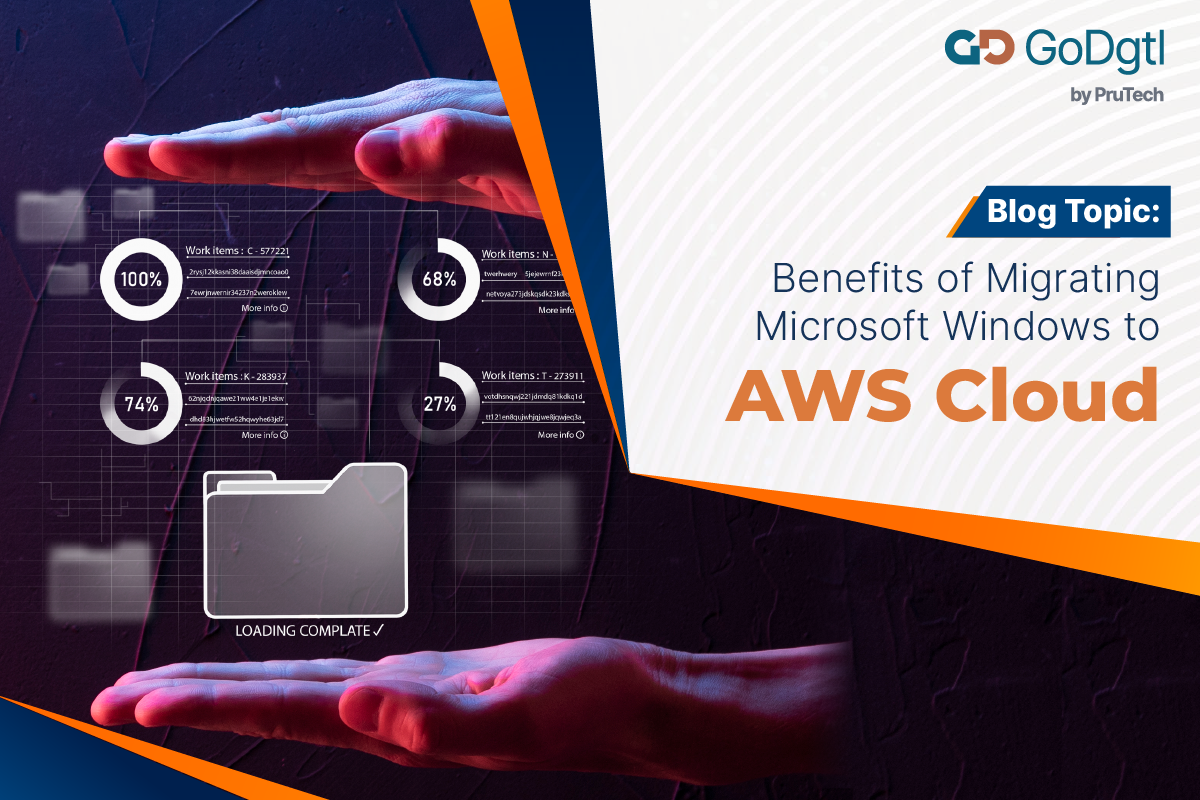Organizations are realizing the potential benefits of migrating their Microsoft Windows workloads and the flexibility it provides for managing huge data and applications.
Organizations are opting to migrate their Microsoft Windows workloads to AWS Cloud to get over the burden of managing unreliable firewalls, hardware and software systems that have performance issues, and resources that are unable to perform during peak times.
Migrating large Microsoft Windows workloads from on-premises data center to an AWS cloud requires a well-planned strategy and implementation of the right set of tools.
Modernizing Microsoft Windows workloads to Amazon EC2 instances offers agility and enhanced security and compliance.
Benefits of migrating Microsoft Windows workloads to AWS Cloud
Flexibility: Amazon EC2 instances allow users to choose the operating system, middleware platforms, and libraries. Amazon EC2 allows users to configure memory, CPU, and boot partition that can be optimized for the available infrastructure. Windows servers run with enhanced efficiency that will improve output and response time.
Customized infrastructure: AWS offers customized environments for Windows under the EC2 instance services. It allows users to seamlessly transfer their on-prem windows files to AWS. EC2 instances support the migration of Windows SQL for effectively managing databases.
Ease of accessibility: Migrating Windows workloads to Amazon EC2 has the major advantage of gaining complete control over virtual servers. It allows users to access the resources from anywhere and anytime.
Enhanced security and backup system: Amazon EC2 ensures automated backup for Windows workloads through customized backup plans to suit the specific needs of every customer. The workloads available on EC2 servers are secure and can be accessed only by authorized members with valid credentials.
Cost-effective: AWS provides a highly secure infrastructure that is designed to protect against a wide range of potential threats, including DDoS attacks, phishing, and other forms of cybercrime. Amazon EC2 for Microsoft Windows allows users to choose a plan that best suits their usage and specific needs. This helps in the maximum utilization of resources and reduces costs significantly. The upfront costs of purchasing and maintaining hardware is reduced. Amazon EC2 passes the benefits to the users as they need to pay a very low amount compared to the services they are availing.
Ease of handling large-sized files: Amazon EC2 offers higher bandwidth making it easy for the storage platform to handle large file requests without causing any disruption to the critical tasks. Organizations opting for AWS cloud benefit through Amazon EC2 and can handle heavy files without any difficulty as compared to a third-party platform.
Windows licensing: AWS guarantees extra reliability by allowing Amazon EC2 users to ‘Bring their own license’. AWS offers the flexibility to use new and existing Microsoft software licenses. By choosing Amazon Elastic Compute Cloud license-included instances fully compliant SQL Server licenses are provided by AWS. Amazon EC2 Dedicated Hosts, and Amazon EC2 Dedicated Instances services allow users to use their existing licenses while migrating to AWS. AWS License Manager helps in the ease of tracking software license usage and reduces the risk of compliance.
AWS consists of various services including AWS Cost Explorer, AWS Compute Optimizer, and AWS Managed Services for optimizing the costs, usage, and licenses after the successful migration of Windows workloads.
Conclusion:
Migrating Microsoft workloads to Amazon Web Services (AWS) can help customers optimize costs and improve the agility and scalability of the infrastructure. This, in turn, allows them to innovate more easily and modernize their infrastructure and applications, leading to continued cost-savings.
By leveraging the power of AWS, customers can take advantage of its robust infrastructure and cutting-edge technology to streamline their operations and achieve greater efficiency. Moreover, AWS provides a secure and reliable platform for running Microsoft workloads, ensuring that customers can enjoy peace of mind knowing that their data is always protected.
GoDgtl by Prutech is an AWS approved Cloud partner with expertise in migrating Microsoft Windows workloads to AWS cloud for various business organizations. Our expertise and competency helped various organizations with diverse industry verticals to realize their cloud transformation process.
Contact us today to learn more about our services and how we can help your business thrive in the cloud era. Contact 24/7 – GoDgtl (go-dgtl.in).







